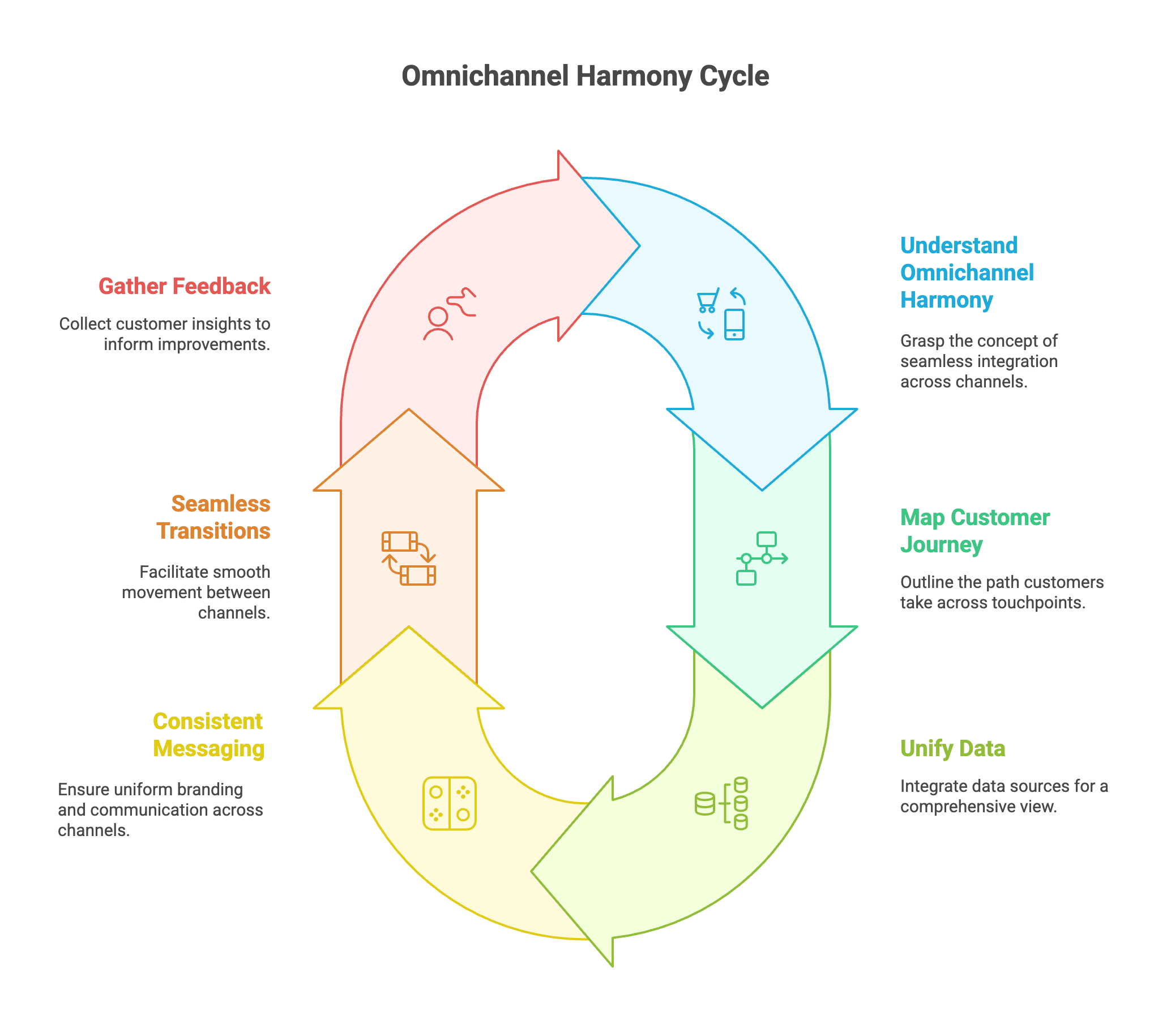
Omnichannel Harmony is no longer optional—it’s essential. Today’s customers aren’t following a single, linear path to purchase. They continuously bounce between multiple touchpoints like online stores, mobile apps, social media, and physical locations, and they expect brands to deliver a consistent, seamless experience regardless of where they decide to engage. Simply, customers expect brands to meet them where they are.
Welcome to the omnichannel customer experience (CX) world, where brands bridge the gap between physical and digital channels to create a harmonious customer journey. But how do you ensure your omnichannel strategy hits the right notes rather than sounding like a disjointed mess? Let’s break down the basics.

Omnichannel harmony isn’t just about being present on multiple platforms. It’s about synchronizing those platforms so that customers experience a smooth and consistent journey across all touchpoints. Whether a customer interacts with your brand through a website, a physical store, or a customer support chat, the message, service quality, and experience should feel unified.
↳ Why it matters:
You can’t deliver a seamless experience without understanding how your customers move through your brand ecosystem. It is imperative to identify the critical touchpoints where customers interact with your brand, digitally and physically.
↳ Pro Tip: Use customer data to track and visualize these touchpoints. Ask yourself:
Data silos are the enemy of omnichannel harmony. Storing information in separate systems (e.g., online vs. in-store) leads to fragmented customer experiences. The solution? Integrate your data across all channels to create a holistic, comprehensive view of each customer.
↳ Example: If a customer buys a product online, your in-store team should immediately have access to that purchase history. This empowers staff to provide personalized recommendations and faster service.
Whether your customers are scrolling through Instagram, walking through your store, or chatting with support, they should encounter a consistent brand voice and message. This builds trust and makes your brand feel more cohesive.
↳ Quick Wins:
Customers expect to move fluidly between channels without friction. If they start a conversation via email, they should be able to continue it via live chat without repeating themselves. This requires robust technology and well-trained teams.
↳ How to achieve this:
The best omnichannel experiences are never static. Regularly collect customer feedback to identify friction points and opportunities for improvement.
↳ Pro Tip: Implement post-interaction surveys across multiple touchpoints to capture insights. Use this data to refine processes and enhance cross-channel experiences.
Even the best omnichannel strategy can fall flat if your employees aren’t equipped to execute it effectively. Your frontline staff, whether in-store associates, customer service agents, or social media managers, need access to the right tools, training, and information to provide seamless experiences across all channels.
↳ How to achieve this:
A well-trained, well-equipped team ensures your omnichannel strategy isn’t just a concept but a reality customers can feel in every interaction.
The Bottom Line:
Mastering omnichannel harmony is about meeting your customers on their terms while ensuring a consistent, personalized, and frictionless experience. Brands that choose to invest in a unified approach drive customer satisfaction and strengthen loyalty and long-term growth.